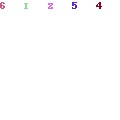Throughout history women’s fashion has evolved and changed to suit the needs of the time. The early days of women’s fashion were marked by sheer, lightweight fabrics that could not withstand washing, ironing, or even being worn several times. In the 1940s and 1950s, designers such as Christian Dior introduced the “New Look,” which pushed the boundaries of fashion with a modern, sleek, and functional silhouette.
Christian Dior’s “New Look” silhouette
Among the many fashion styles of the 20th century, Christian Dior’s “New Look” is one of the most iconic. This style introduced the cinched waist, voluminous skirt, and rounded shoulders. Its opulence made it a popular choice, but it was not without its critics. In fact, the most famous protest occurred during Dior’s first visit to the United States.
A fashion-attuned public was not happy with the new look. They held placards reading “Burn Dior” and “We abhor dresses to the floor!” They also stormed fashion shows.
Mugler’s freaky spaceship
Thierry Mugler is a French fashion designer who revolutionized haute couture. He combines spectacle with glamour, and creates futuristic, superhuman looks. He has dressed many pop icons and has remained an influential figure in the fashion industry for decades.
As a result of his unconventional designs, Thierry Mugler is a legend amongst the fashion world. His creations have been worn by pop icons such as Beyonc and Kim Kardashian, and he has been called the “creator of shock.” The French President Emmanuel Macron said that he revolutionized French fashion.
Helmut Lang’s clothes are functional to their core
During his career, Helmut Lang has been known for his avant-garde, innovative approach to clothing design. He creates clothing that is not necessarily fashionable, but is designed to function well in everyday life.
He started out as a bartender in Vienna, where he was fascinated by the clothes and uniforms of the people in the local club scene. He subsequently began to study these different uniforms and became interested in the social class differences in the uniforms. He eventually began to design his own clothes. Check Keep it secret store for classy women’s fashion.
Genderless fashion started as a niche Japanese subculture in the 1980s
Unlike western cultures, Japan values gender roles. Women and men wear different clothing. But Japanese fashion subcultures are often confusing to foreigners.
Genderless-kei is a subculture that is characterized by males or females who cross the gender boundary. It’s a popular trend in Japanese fashion. Among the most famous Japanese genderless-kei are Toman and Kondo Yohdi. They’ve received a lot of comments about being “girly”. But Toman says he’s doing what he wants.
Fabrics used to make women’s dresses were so sheer and fragile that they couldn’t withstand washing, ironing, or even several times
During the late 19th and early 20th centuries, women’s clothes were made with only a few fabrics. These were so sheer and fragile that they were difficult to wash and iron. These garments had few pleats and were usually unlined.
The fabrics used to make these dresses were imported from the Far East. Until the late 1940s, there were severe fabric shortages.
Men’s fashion in the 1920s

During the 1920s, men’s fashion was all about status and employment. The style of the day was influenced by Hollywood films, the media’s obsession with sexiness, and beautiful celebrities. The fashion for men was also shaped by workmanship developments and mass publicizing.
The most common style of men’s clothing in the 1920s was the “tuxedo.” This style was ideal for formal occasions. It consisted of a white or dark-colored vest and a tuxedo shirt with a tie.
Men’s fashion in the 1930s
During the 1930s, men’s fashion took a different turn from the previous decades. As people struggled to recover from the stock market crash of 1929, they had to make sacrifices to their clothing.
The men’s wardrobes in the 1930s didn’t follow the latest trends, but they were still quite comfortable. In fact, the clothing was surprisingly relaxed, which made it one of the most appealing periods in the history of fashion.
Men’s fashion in the 1940s
During the 1940s, men’s fashion had a military theme. The clothing was functional and utilitarian. It was made of inexpensive fabrics. There were no long sleeves or fancy buttons. There were restrictions on the amount of fabric that could be used.
Rationing was an issue during the war. The government required that clothes be more durable. It was also a time when people were encouraged to mend their old clothes. This helped to save materials and to reduce expenses.
Men’s fashion in the 1950s
Throughout the 1950s men’s fashion saw gradual changes. A lot of the classic silhouettes of the 1940s were kept, but they were less structured and had a more casual feel. In addition, color and pattern were introduced into daywear, and wool became more popular.
The 1950s was also the time when a “youth culture” emerged. Young men in the US and Europe looked to rebellious Hollywood stars. Marlon Brando, James Dean, and Lee Marvin were examples.
Men’s fashion in the 1960s
During the 1960s, men’s fashion was a reflection of their beliefs and lifestyle. The styles were often quirky and experimental, with pop art influences.
The 1960s also saw the introduction of a variety of patterns and colors. The decade was a time of great unrest in the United States, and the fashion and attitudes of the time reflected this. During this period, men wore more clothing than ever. The style of clothes that were worn was influenced by Western and Eastern fashion.












